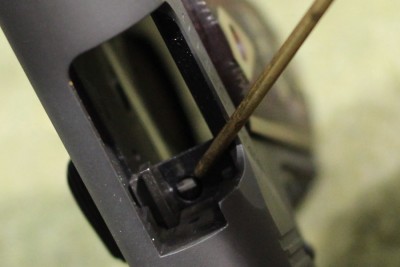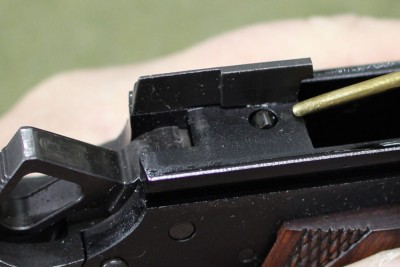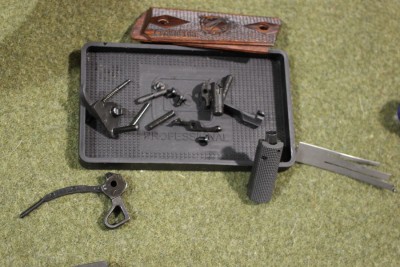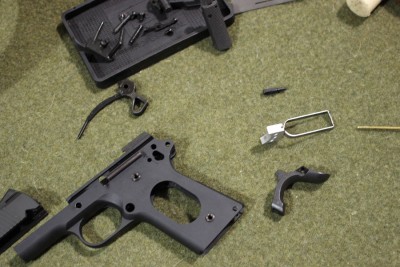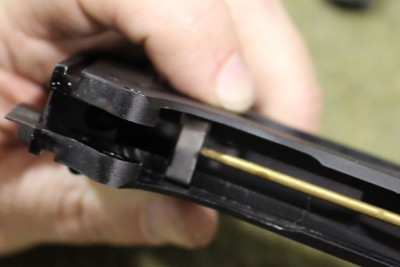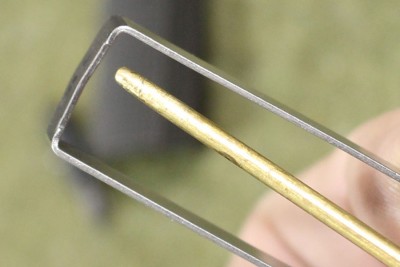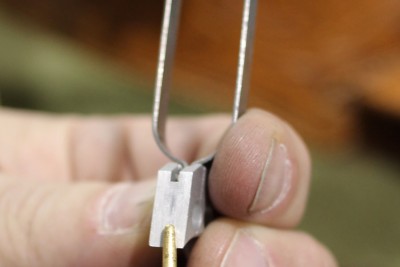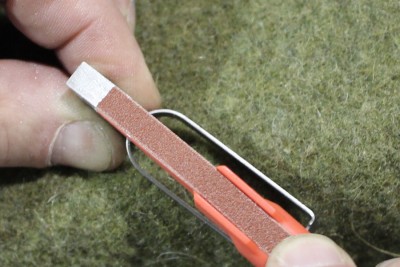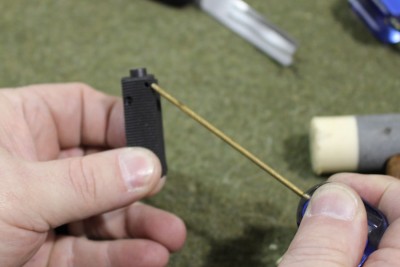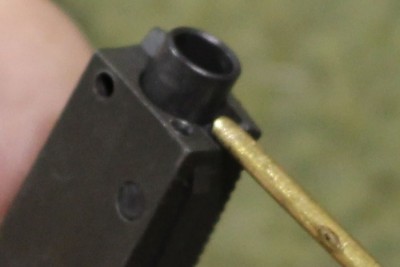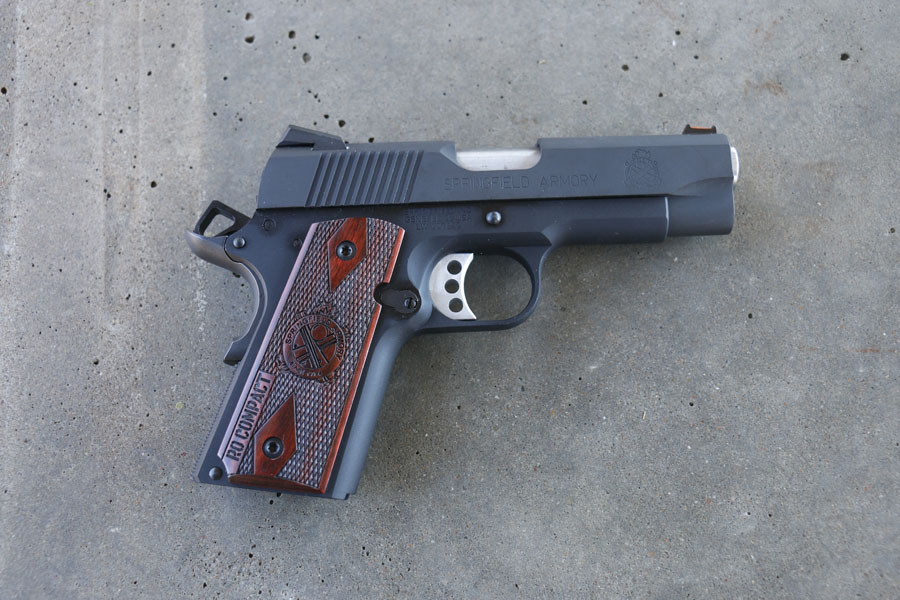I like guns. I tend to hang out with folks who like guns. While I’m not looking to add any guns to my collection, I sometimes have a hard time passing up a genuine bargain. I found one of those bargains recently when a friend of a friend asked if I wanted to buy a 1911.
“It needs some work done,” he said.
It needs some work done. That could mean almost anything. That 1911 could be a paperweight with a serial number. Or maybe not. Whenever I hear the phrase “it needs some work done,” I always ask “How much?” And I typically mean that in two ways–how much work does it really need, and how much are you trying to sell it for?
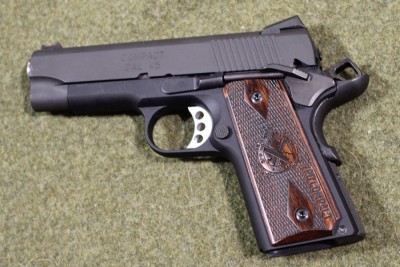
This is the condition of Springfield when I got it. I wondered why he handed it to me with the hammer cocked. But this is a great gun that deserves to be fixed.
Assess the Situation
This exchange cues an inner monologue of my own. It goes something like this:
- Am I familiar with this gun?
- Can I repair it myself?
- Can I get parts?
- How long will the repair take, and how much will it cost me?
- What is the gun worth repaired?
- What can I buy it for?
“It needs some work done,” typically means it needs a ton of work, or that the work it needs is way past the skill level of the person selling the gun. Either way, I can’t typically tell unless I get into it myself. And that isn’t always possible before the sale, so if the price is right….
Buyer Beware
As shocking as it may seem, there are some people out there who will try to sell some janky, busted-up junk! Those very same people may even lie to you about what is wrong with said junk! I know, it’s hard to believe. I have learned to assume the worst when it comes to guns that “need a little work.” I always plan on replacing any part that looks damaged, broken or suspect while calculating the potential value of such a buy.
One thing to watch out for, if you have the chance to handle the gun before you buy it–be careful if you take the gun apart–you wouldn’t want to be accused of damaging the gun in the process.
Exhibit A
I recently found a deal on a Springfield Armory Range Officer compact .45ACP. The gun had only one issue, according to its current owner: “The trigger won’t move and the hammer won’t drop.” I decided to give it a look-over. As I’ve had some prior experience with the RO, and lots with the 1911, I noticed that the disconnector was not in the proper position.
I’ve shot a few Range Officers, and several Springfield 1911s. Their guns aren’t prone to problems. Odds are this would be an easy fix. There was very little wear on the gun. My best guess was that the owner had tried to lighten the trigger, or smooth something out and had botched the repair, but wasn’t willing to admit it.
We were able to work out a deal and we both walked away from it happy.
The Teardown
Step 1. Get a parts list going.
Upon removing the slide, I discovered that the extractor appeared to have been replaced but not fitted to the rear of the frame. This was not a function issue, but did warrant a cosmetic repair. Everything else appeared to be functioning properly and looked factory fresh, with little wear.
[one_half]
[/one_half][one_half_last]
[/one_half_last]
I then began disassembling the lower, where the mystery of the failure to fire would be solved. The sear and disconnector were locked out of place, with the trigger return spring wedged in between them. I removed the main spring housing and found that the pin that kept the main spring assembly in place was gone. Because of this, what should have been a single assembly had divided into four parts.
[one_half]
[/one_half][one_half_last]
[/one_half_last]
This is where a little experience comes in handy. A total novice may not have picked up on the issue. Even avid 1911 fans sometimes won’t take their guns down this far.
As I finished the break down, the trigger would not move freely, despite the lack of tension it was under. I believed that the trigger bow had been bent with the other parts locked in place, but when I removed the magazine release I saw that the bow was not bent at all. Rather, someone had installed a trigger without fitting it.
The Repair
I had to fit that trigger properly. I did so by removing metal from the top of the trigger with sanding sticks until it was smoothly running in the frame. The next step was to install the sear and disconnector, along with the trigger return spring. This proved to be impossible with the spring that was in the gun; it was the wrong size.
[one_half]
[/one_half][one_half_last]
[/one_half_last]
[one_half]
[/one_half][one_half_last]
[/one_half_last]
One replacement spring later, and the part was working properly. I didn’t have a pin for the main spring housing handy, so I had to order one and wait. Once UPS delivered my love from Brownell’s, the gun was ready for final assembly and testing.
The Result
The gun is now working as designed. I fitted the trigger, replaced two parts, and function-checked the Range Officer. With the extractor fitted to the rear of the slide, a bit of file work, and some finish from a pen, Exhibit A will be in perfect condition. Except… wait a minute. Where are the magazines? Remember the whole Buyer Beware spiel, and the checklist? I forgot a bullet point in there: always ask “Where are the magazines?” I had taken the box with the gun in it and assumed that, surely, there would be at least one magazine in there… Oh well- back online to Brownell’s!
Buy a Springfield Armory Range Officer on GunsAmerica: https://www.gunsamerica.com/Search.aspx?T=range%20officer
[one_half]
[/one_half][one_half_last]
[/one_half_last]
[full_width]
[/full_width]
